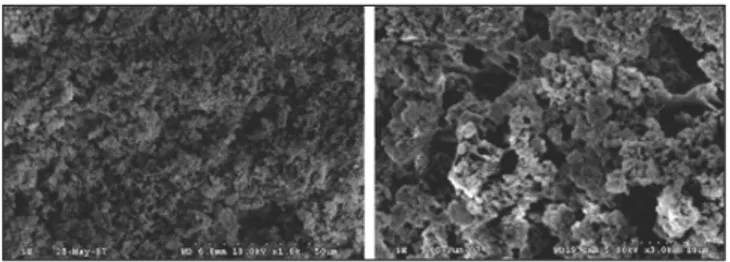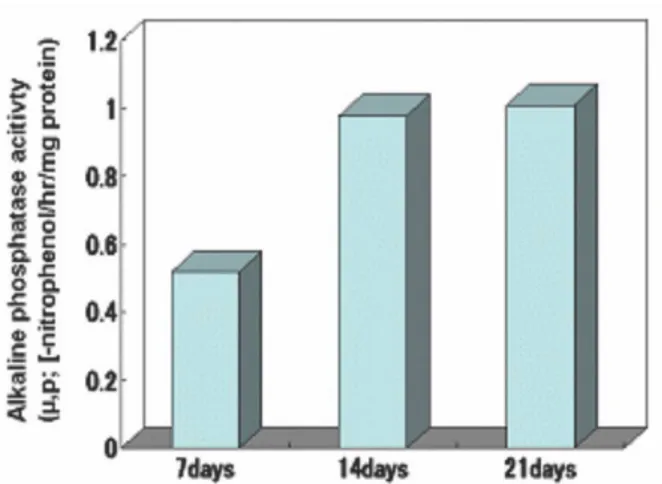Introduction
Bone is generally considered to be a nanocomposite of min- erals and proteins. Calcified tissue is regarded as a biological, chemical bonded composite between hydroxyapatite (HA) and type-I collagen. The preparation of a nanocomposite of HA- collagen that is similar to the nanostructure of real bone have been reported.
1-3)The largest problems with type-I collagen, which makes it difficult to follow up on well controlled pro- cessing, are its cost and limited commercial sources of this material. Type-I collagen can be replaced with a gelatin pre- cursor. The commercial sources of gelatin show good water
solubility and well-defined physical and chemical properties.
4,5)Recently, HA-gelatin composite powders were made by the precipitation of HA. These composites showed nano-sized HA powders dispersed in a gelatin network. The preparation of Gel-HA nanocomposite was previously reported by Chang et
al.
4-11)In this study, the Gel-HA nanocomposite similar to the
one made by Dr. Chang was used.
Bone marrow has a multipotent population of cells that are capable of differentiating into a number of mesodermal lin- eages; adipocytes, osteoblasts, and other mesodermal path- ways. Bone marrow stromal cells (BMSCs) also support the proliferation and differentiation of hematopoietic stem cells.
12)This study examined the osteogenic differentiation and pro- liferation of rabbit bone marrow stem cells in a Gel-HA nanocomposite and elucidated the possibility of osteoinductivi- ty of a Gel-HA nanocomposite seeded with BMSCs as a bone tissue engineering scaffold.
*Corresponding author Uk-Kyu Kim
Dept.OMFS. Surgery, School of Dentistry, Pusan National University 1-10, Ami-dong, Seo-gu,602-739, Busan, Republic of Korea, Tel: 82-51-240-2803
E-mail: kuksjs@pusan.ac.kr
Osteogenic differentiation of bone marrow derived stem cells in gelatin- hydroxyapatite nanocomposite
Hyun-Jun Jeon
1, Young-Sup Hwang
1, Uk-Kyu Kim
1*, Dae-Seok Hwang
1, Kwang-Ho Lee
1, Myung-Cheol Chang
21
School of Dentistry, Pusan National University, Korea,
2

